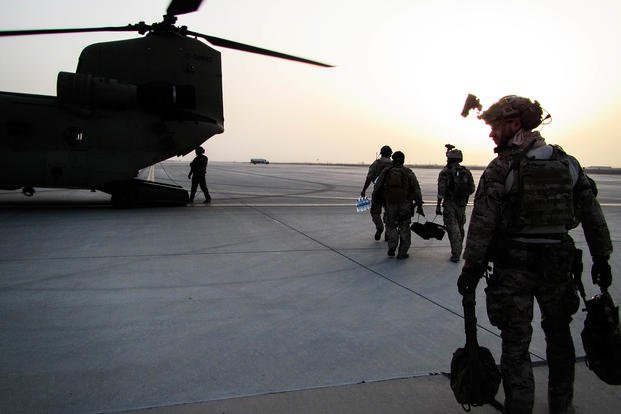The hectic last days of the U.S. presence in Afghanistan spelled an end of an era for the U.S. special-operations community.
For the past two decades, U.S. special operators have been at the forefront of the fight against global terrorism. In addition to Afghanistan, American commandos deployed -- and, in some cases, are still deploying -- to Iraq and Syria and parts of Africa and Southeast Asia to combat terrorist groups.
U.S. Special Operations Command is following the Pentagon's shift to great-power competition against near-peer competitors, such as China and Russia, but elusive and persistent jihadists still threaten security and stability around the world.
That means U.S. special operators face two completely different opponents. Although those challenges have common elements, SOCOM will have to use two different playbooks to counter them.
The Fight Against Terrorism Continues
Even before the fall of the Afghan government and the chaos of the Taliban takeover -- which could lead to a resurgence of al-Qaida or other terrorist organizations -- SOCOM's leader emphasized that counterterrorism remains the U.S. special-operations community's priority.
In testimony to Congress in April, Gen. Richard Clarke, the commander of SOCOM, highlighted that his force has the capabilities and tools to address both violent extremist organizations and Russia and China.
Clarke also said that there has been a drawdown in the deployment of special-operations forces abroad, with 2020 being the year with the fewest commandos abroad since 2001.
The SOCOM commander told lawmakers that about 40% of U.S. special operators focus on near-peer adversaries, with the rest fighting terrorists. Clarke said the command is looking to balance that division of labor equally, showing that while the Pentagon pivots to near-peer warfare, the U.S. special-operations community still has to deal with terrorism.
Despite being battered by the U.S. military and intelligence community for more than 20 years, al-Qaida and its many offshoots are still present and seeking to strike American and Western targets.
Al-Qaida in the Arabian Peninsula is particularly dangerous. Other VEOs, such as ISIS and Al-Shabaab, also pose a considerable threat.
In comments at the Military Reporters and Editors Association conference in November, Clarke acknowledged that the threat of terrorism remains active.
Clarke said SOCOM has started a review from its operations in Afghanistan to inform the special-operations community's future approach to violent extremist organizations. He suggested the review's focus will be on how U.S. commandos supported larger conventional forces.
"We got to take those lessons learned, and where applicable to conditions somewhere else, we have to be able to apply those," Clarke said at the conference.
One Mission, Two Lessons
Perhaps one of the most important nuggets of information from Clarke in November was about how SOCOM conducts foreign internal defense -- the training and advising of local forces -- and how it may approach that mission in the future.
Foreign internal defense is arguably one of the most important missions done by U.S. special-operations units, as it allows them to "outsource" all or part of the burden of warfare by building the capability and capacity of foreign conventional and special-operations units.
After nearly two decades conducting that mission on behalf of Iraqi and Afghan counterparts -- at the cost of billions of dollars and thousands of American lives -- forces in both countries have faltered or failed against determined adversaries.
The approach U.S. forces took to that mission in those countries shouldn't be the default going forward, Clark said last month.
"We don't necessarily need to train with partner forces for what we want them to do. We need to train for partner forces of what they need to do for their country and their environment. I think that's the biggest lesson that we have to take from this, writ large," Clarke told military reporters at the conference.
What that means in practical terms is that U.S. special operators may have different curricula for foreign internal defense, depending on the "customer."
For example, Army Green Berets in Taiwan may teach their Taiwanese counterparts guerrilla tactics to use against a larger Chinese force after an invasion of the island nation, while Marine Raiders deployed to Kenya train their local counterparts to conduct counterterrorism and direct-action operations against a non-state group like Al-Shabaab.
The inherent flexibility of U.S. special-operations units would allow them to teach different aspects of the same mission set to two audiences in ways suited for each audience.
The future will be packed with challenges for the US special-operations community, but it has shown over the past 40 years that it has a versatile toolkit to address current and emerging threats.
Stavros Atlamazoglou is a defense journalist specializing in special operations, a Hellenic Army veteran (national service with the 575th Marine Battalion and Army HQ), and a Johns Hopkins University graduate.












